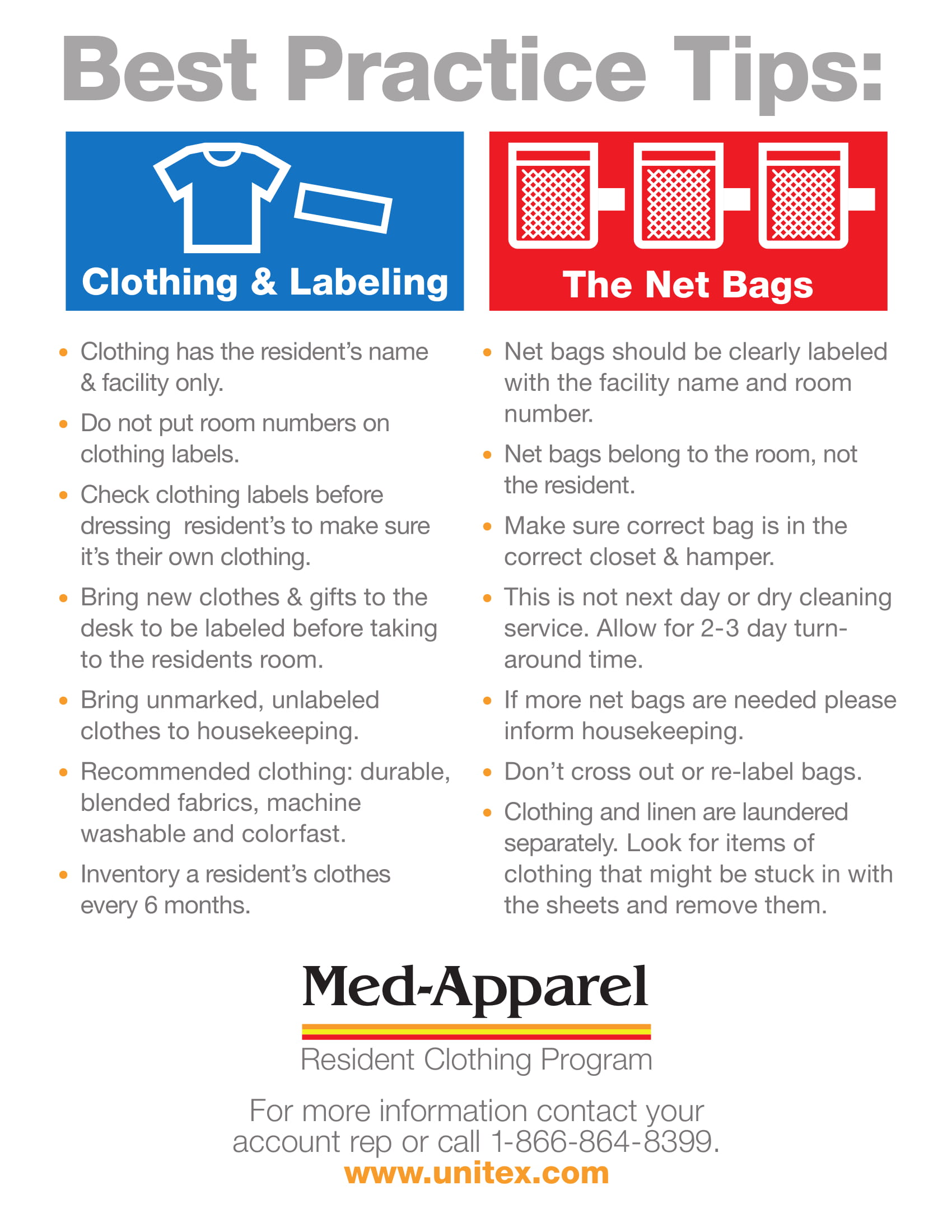Managing residential laundry comes not only with a lot of responsibilities but a whole host of challenges unique to residential facility operations. And they can only get increasingly more difficult as your resident population increases!
There’s always the problem of misplacing residents’ clothing or the perennial problem of losing your facility’s linens in the process of stripping off and laundering your items. Aside from these losses, the risk of your overhead costs getting out of hand is looming just beyond the horizon, threatening to throw your budget completely off-rails.
Fortunately, there are tweaks you can make to your laundry management procedures to save yourself from these common issues.
Here are some little tweaks that you can add to your laundry routines at your residential facility to minimize losses and increase efficiency:
1. Improve your labeling system.
When it comes to running in-house laundry for residential facilities, labels are your best friend. Mark everything of importance with the proper label – resident’s clothing, net laundry bags, etc. Make sure every item that your residents will end up wearing gets properly labeled before the resident gets to wear them – that means new clothing and gifts brought in by family and friends need to go through labeling before being given to the resident. It will also help to simply mark the clothing with the owners’ names and not room number to prevent mix-ups in the future. And every and all pieces of clothing that are unlabeled should be sent back to housekeeping.
2. Conduct regular inventories.
Make sure to check each resident’s clothing every so often, between three and six months. A standard inventory will make sure the clothes are with their rightful owners. Additionally, always check the clothing label before dressing a resident to ensure that the clothes belong to them.
3. Communicate with residents’ families over their clothing.
It is important that the residents’ families and friends are well aware of the kind and quality of laundry you can provide for their loved ones so they can also make necessary adjustments – for instance, with the kind of clothes they send over. While residents are really free to wear whatever they wish to wear, clothing disasters like rips and color fading can be easily averted if the clothes are made of fabrics that can withstand repeated and often intense washing. These include tough, blended fabrics that are machine-washable, durable and color safe to ensure quality is protected.
4. Provide appropriately-labeled laundry bags for each resident/room.
Provide enough laundry collection bags for each resident to place their clothes in. Appropriately label each bag so sorting – and subsequently, washing – is made easier and more efficient. Make sure to never re-label the bags by crossing out old labels – discard old labels and replace with new ones to prevent any confusion. Net bags should be clearly labeled with the facility name and room number, and always check to ensure that the correct bag is in the correct closet or hamper.
5. Create a pickup and delivery system that your residents fully know and understand.
Make sure your residents and/or families are well-aware of the laundry system you have put in place – and keep with it. Then, stick to the schedule as best as you can so your residents will know exactly when to expect their clean clothes and will have enough clothing for each of these rotations. Remember that laundry service isn’t a next-day or dry cleaning service, so it’s important to allow for a 2-3 day turnaround time.
6. Improve pre-laundry inspection.
One of the most common mix-ups in residential laundry facilities is when residents’ clothing ends up with the linens and/or your facility’s linens end up in your residents’ closets. Either way, this is an inventory nightmare that could possibly rack up unnecessary costs (not to mention the stress and headache)! Put in place a foolproof pre-wash inspection for both your linens and your residents’ items to ensure that there are no mix-ups and losses. Make sure to check in-between sheets, as this is one common place that clothing items get caught.
Try out these best practices and get better, more effective results for your residential facility laundry!






